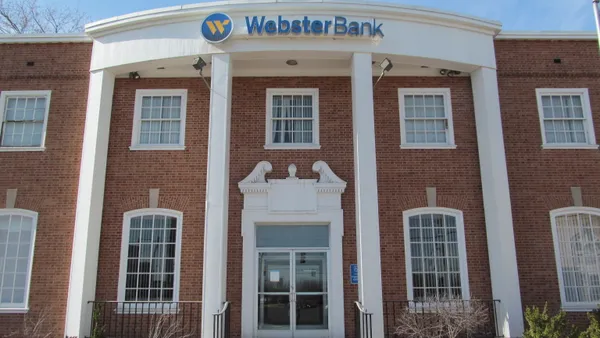The economic crisis caused by the coronavirus pandemic has resulted in a dramatic increase in the number of Americans receiving unemployment benefits. As of mid-September, the Labor Department reported that the number stood at 26 million people. While this money is intended to help individuals weather the current financial storm, it is also creating a ripe opportunity for fraudsters. That's because banks and other financial institutions are dealing with vast amounts of money flowing in and out of customers' accounts. Much of it is completely legitimate, but some of it isn't — and therein lies the problem.
"Not all of the money due to unemployed Americans is actually going to legitimate consumers," says Robin Love, vice president, product management at Early Warning Services. Early Warning provides actionable intelligence to help financial institutions fight fraud, mitigate risk and better service their customers for account opening, funding, and payment experiences. "Bad actors are establishing themselves as individuals that meet unemployment requirements, and then defrauding the government out of millions of dollars of benefits," she says.
So where does the money go? Fraudsters need a place to have the improper payments deposited — and then a way to quickly move the money out.
Financial organizations are reporting that some consumers are receiving unemployment payments that they did not apply for. In many cases, this is happening as part of a scam in which the fraudster will contact the unwitting victim and will offer them a portion of the deposit (improper payment) for participation in a work-from-home or personal shopper job opportunity. The fraudster ultimately receives a portion of the improper payment, and eventually the consumer may receive a notice with a request to pay the funds back to the originator (the government).
This creates huge headaches for financial institutions. "Once that consumer calls the bank, it starts a whole series of actions on the part of the financial institution," says Love. "Now the bank has to investigate why the money is in the account, if the customer spent any of it, and what the source is, which can require a big investment of time and resources."
Further complicating the picture is the rapid rise of digital new account applications. As a result of the coronavirus pandemic, more and more people are relying on their smartphones or laptops to open a bank account since many bank branches have been forced to close. While convenient for customers, the transaction makes it easier for fraudsters to set up these accounts and have improper payments deposited, Love said. Using real consumers' identities (known as true name fraud), a fraudster may use an innocent person's identity for the sole purpose of committing fraud. Another tactic is to use a synthetic identity when establishing a new account. In either scenario, these methods perpetuate the fraud associated with these improper payments.
But there are ways for financial institutions to avoid the operational and reputational risks resulting from unemployment-benefits fraud. Here are three best practices that can help banks navigate these challenging times and how Early Warning can help:
- Establish a robust onboarding strategy — During an unemployment benefit scam, a fraudster might assume the identity of another person and apply for unemployment benefits. As soon as the state government has accepted their application, the fraudster might attempt to open a new bank account to deposit the unemployment benefit money. Given that reality, financial institutions need solutions that mitigate the risks associated with new account opening. Whether a customer submits a new account application via the branch, online, mobile or contact center channel, Early Warning's Real-time Identity Chek® Service enables financial institutions to determine if the person opening the account is really who they say they are in real time. Love said there are also solutions in the marketplace that give financial institutions visibility into multiple account openings. "If someone opens 10 different checking accounts at 10 different banks, there are solutions that will alert a bank that this is happening," she said. The best part of these solutions, she added, is that they run in the background — meaning they don't create friction and derail a good customer experience for legitimate account holders.
- Understand how the account is being funded — One of the biggest red flags for account fraud is how the account is funded. "If someone is opening an account and then not funding it, that's a concern," Love said. But it goes further than that. Banks need to verify that when the account is funded, the money comes from a legitimate source and not a fraudster attempting to deposit unemployment benefit insurance money. Early Warning's Real-time Deposit Chek® Service with Account Owner Authentication allows banks to validate that account owners are not only who they say they are, but that they also are funding the account with money from legitimately owned accounts. "We can verify the owner of the account that's going to be the funding source, but we can also provide feedback on whether that deposit is likely to be good," she said. Early Warning's solutions also enable banks to verify that deposits coming into an account are in the account holder's name. "If Mary Jones owns the account, but the payment coming into the account through ACH is in David Smith's name, we have tools that can detect that," Love said.
- Educate your consumers — A smarter consumer, alert to fraudulent activities, can go a long way in mitigating any potential damage. Love said banks should continue to share educational resources with their customers to help them stay alert and learn how to spot a potential scam. One of the best tips, she said, is for banks to reinforce that they will not call or email customers asking for Social Security numbers, bank account numbers or other personal identifiable information (PII). Banks can also warn customers against responding to phishing emails that promise to deliver unemployment payments to a customer's account more quickly. "A person might receive an email claiming to be from the U.S. Department of Labor or their state's unemployment-insurance personnel with a promise to get them their unemployment check faster," Love said. "What they're really doing is tricking you into sharing PII such as your Social Security number, bank and credit card information, and other sensitive data that could help them commit frauds such as identity theft."
"None of these scams are new," Love said. "They've been going on for years, but it's being perpetuated because there is all this extra money floating around in the form of unemployment payments." But even though it's become a ripe opportunity for fraudsters, with the right tools and education, banks and their customers can reduce the chances that they will fall victim to unemployment-benefits fraud. To learn more about Early Warning's solutions, please visit https://www.earlywarning.com/products.










